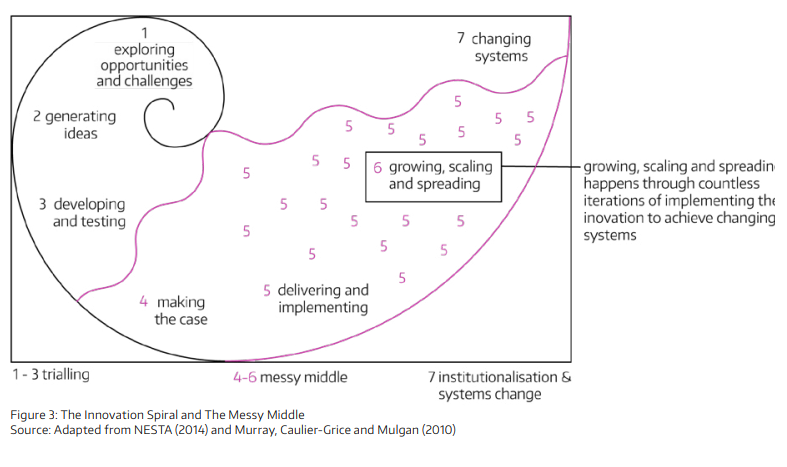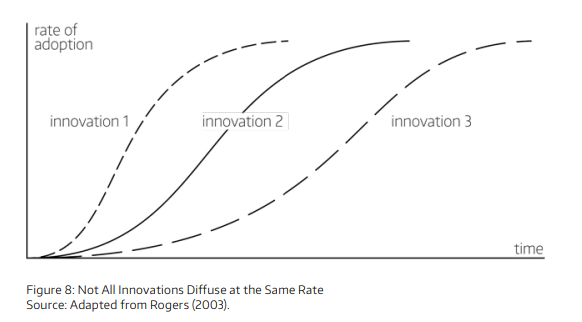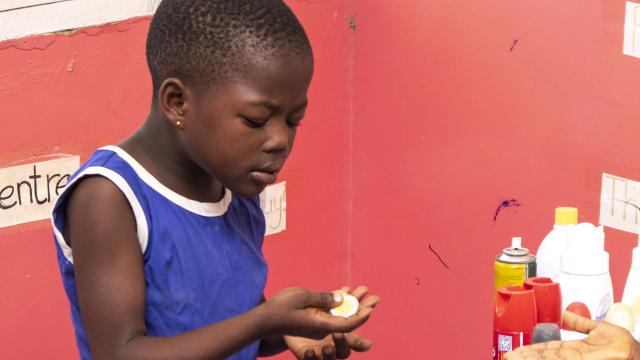Defining Scale
Problems within the realm of education span across hundreds of countries and millions of children. For example, in 2022, 70% of children in low- and middle-income countries were unable to read with understanding by age 10. Solving a problem this size requires solutions that can help the greatest number of children. In other words, it requires solutions at scale. Within this context, Global Schools Forum defines scaling as:
Expanding, replicating, adapting, and sustaining successful policies, programs or projects in geographic space and over time to reach a greater number of people.
Purpose of Scaling
We conceptualize scaling as a process, not an end goal. The end goal and intention behind the decision to scale stems from a commitment to sustainably providing educational opportunities and excellence for all. It is not enough to ask "how" to scale, but to first ask "why" we want to scale up. This question encourages a focus on intent and outcomes rather than size, pushing organizations to explore a wider range of strategies for making a difference. In doing so, it not only aligns more closely with the core missions of organizations but also offers a pathway to meaningful and lasting change.
Messiness of Scaling
Once a challenge has been identified, a solution has been ideated, developed, tested, and implemented, then an innovation is finally ready to scale. However, the journey is not a linear one. It is messy, complex, and often described as a spiral.
 Successful scaling is often the result of multiple iterations, many of which are not successful. This means that scaling may be a time-intensive process, as bringing change is gradual. However, the learnings and adaptions from these iterations result in an innovation that can scale successfully through the system within which it exists. As time goes by, the acceptance of new innovations increases, building towards systems-level change as more individuals continue to accept and integrate into the change.
Successful scaling is often the result of multiple iterations, many of which are not successful. This means that scaling may be a time-intensive process, as bringing change is gradual. However, the learnings and adaptions from these iterations result in an innovation that can scale successfully through the system within which it exists. As time goes by, the acceptance of new innovations increases, building towards systems-level change as more individuals continue to accept and integrate into the change.

Scale is often defined as messy because no two innovations will have the same journey. Different innovations will have different rates of adoption and different needs and challenges they will be faced with. Some innovations may require many more iterations, while others might require less adaptation. This is an important reminder that scaling journeys are personalised, context-dependent, and require patience and persistence.

Types of Scaling
Scaling is not a one-size-fits-all. Within the context of education, scaling is of three types: scaling in, scaling out, and scaling deep.
- Scaling Up: Achieving greater numbers through adoption of the innovation.
- Scaling Out: Institutional and policy changes through adoption of the innovation.
- Scaling Deep: Impacting culture through innovation that alters behaviours and norms.
Gyanshala scaled up when they introduced their solution to affordable private schools (APS). Previously, they were serving public schools with their Learning Quality Improvement programme in India. However, with the aim of maximizing the number of individuals benefitting from this innovation, they decided to increase their numbers through new modes of adoption. This required the development of a new theory of change that mapped how they would achieve this scale-up, along with the development of financial models to ensure that they were able to achieve the desired outcome.
Sabre Education scaled out when they advocated for institutional reform after conducting a scoping study of private kindergarten schools in Ghana. With the intent to expand their successful public school kindergarten teacher training model for private school teachers, they began to identify key challenges in the process of scaling. Sabre co-designed Ghana’s national in-service kindergarten teacher training manual and are now voice of sector champions building towards systems-level change.
Dignitas was able to scale deep through the adoption of a behavior change approach when scaling their LeadNow App, a tool to enhance teaching quality and promote better learning outcomes in Kenya. Through A-B Testing, Dignitas aimed to understand and change school leader and teacher knowledge, opportunity, and motivation to impact teaching behaviours in the classroom. In changing fundamental classroom behaviors, they were able to achieve a sustainable and deep model of scaling.
Having three different types of scale reminds us that scaling journeys for educational organizations will often look very different from one another. However, the three definitions share a common goal: to advance sustainable, quality education for all. Thus, the focus of scaling should never be the act of scaling itself, but the purpose behind it.
As the case studies above showcase, organisations with a similar goal to improve learning outcomes of children through various innovations all adopted different pathways to and types of scale. Once the purpose of scaling is identified, innovations are able to then identify which kind of scaling journey best suits their context, resources, and needs.
Enablers of Scale
It is important to identify what factors can best enable and support scaling deep, out, or up. There are 14 enabling factors, which can be divided into four broad categories.
- Design: the intention and plan to scale impact should be built into the innovation by committed leaders to ensure it is being built towards.
- Delivery: operational realities of implementing or delivering at large-scale is essential, including technical and political actions which allow the innovation to reach the population.
- Finance: sufficient funds and, perhaps more importantly, their appropriate allocation into various parts of the innovation is key to ensuring scale.
- Enabling Environment: the context within which scale is occurring and the buy-in, trust-building, and co-designing with key stakeholders is a foundational need to scale impact.
To successfully scale, therefore, the innovation must be designed with the intent to maximize impact, have viable operational pathways to deliver this impact, develop feasible ways to ensure the impact is sustained, and ensure that the innovation is desirable to the context and community. A desirable, viable, and feasible innovation is created to succeed in scale.
Scaling at the Labs
GSF's Impact at Scale Labs was created to support promising solutions with potential to scale. It aims to provide organizations with the three ingredients to successful scale-up. Participating organizations are provided with expert coaching, flexible funding, and partnership development support. The learnings from the Lab provide evidence on ‘what works’ in education and what makes organisations more effective, thereby supporting and inspiring other innovations in their scaling journeys.
In the first cohort of the Labs programme, we supported participating organisations to scale their solutions that improve learning recovery post COVID-19. The second cohort of the programme is supporting four promising, locally led organisations working to improve development and learning outcomes for children aged 0-6 years in Kenya. The Labs is now recruiting for its third cohort.

